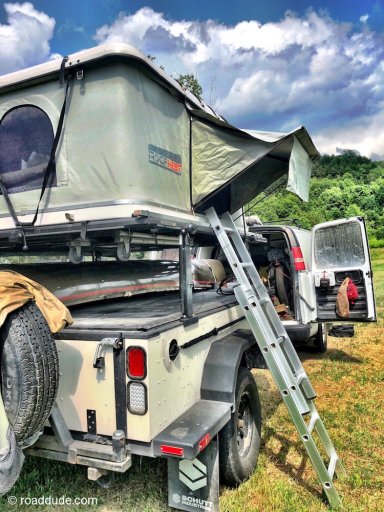
Enthusiast III
To see the photos and links, follow the link below or link in my profile.

 advntrtrac.home.blog
advntrtrac.home.blog
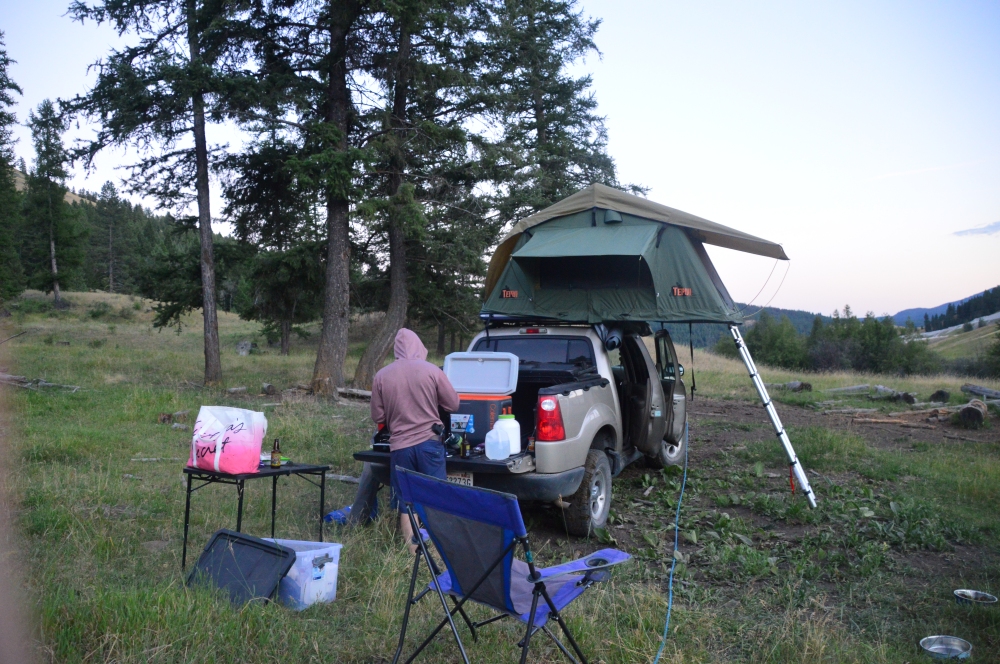
Our current cooler
Seems like forever ago when I bought this Tepui Kukenam Sky. So much has happened between now and then. Lots of camping trips and life events. Through all of it the tent was saddled up and ready to roll out at a moment’s notice, which is a nice feature of a tent that is mounted on the truck already. I can’t begin to count the amount of last minute trips I have done.
I bought the tent at Mule Expedition Outfitters in Issaquah, WA in July of 2017 (Shout out to Mule). Immediately we took it out. Not that we needed a new excuse to take a trip as we had already been going all over the Northwest and California before the tent anyway.
Here we are, 2,730 miles away from Mule and 745 days later after purchasing. This tent has been on the truck for about 65k miles, 16ish states, seen the Pacific and Atlantic, mountains and beaches.
Time has done a number on the tent. Before I start talking about what we’ve learned, and the damages, I want to point out that we have not been kind to the tent or taken steps to protect it, like taking it off the truck during winters.
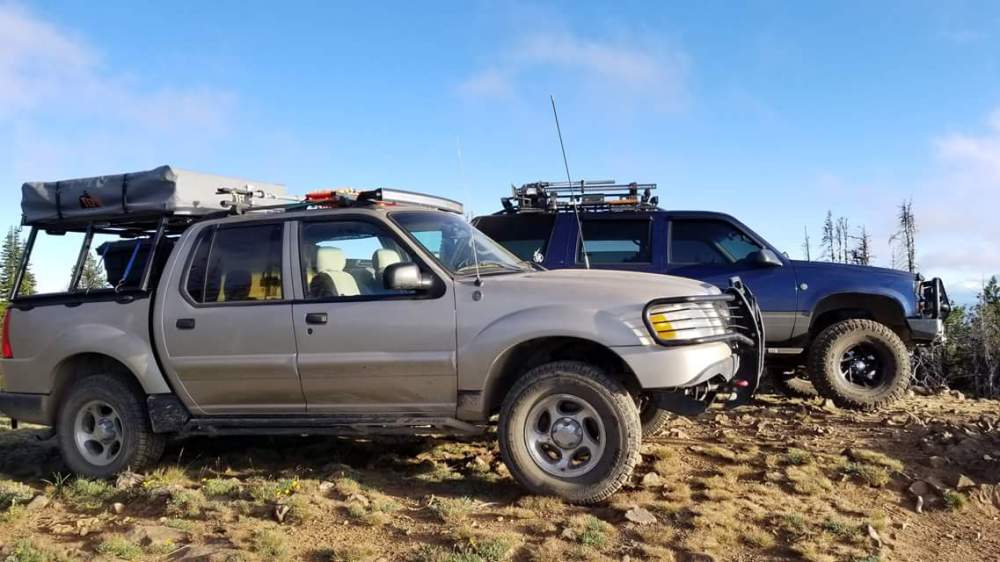
I am not affiliated with any company mentioned or sponsored by them.
This article is my opinion. There is no sponsored 70k dollar Insta-landing here.
The tent is a 2017 Tepui Kukenam Sky. They have probably made changes in manufacturing since then, so I can’t speak for what they have learned through R&D. If you are planning on getting a tent, contact the manufacturer to see what they have done to prevent some of the cons I mention below.
Pros:
Space savings. It saved us lots of space inside of our small truck as well. Now the tent and other sleeping stuff can be out of the bed or cab and safely contained on top of the rack. If you have a small truck or Jeep, then you know storage is constantly a battle.
Safety and security. The Tepui definitely beats being on the ground in a thin plastic tent any day. Katrin loves that it’s up away from where bears and the bumps in the night could just walk through the walls. Also, when we hear something roaming around or the dogs start barking, we have a nice vantage point to see out like a tree stand. All of the windows open fully as well, if you really want to use it as a tree stand.
Beating the rain, snow, and mud. The times when we have camped in the rain, we never woke up in a puddle. Despite being a bit wet on the walls and edges of the mattress. When it comes to rain, we have had to put the tent away wet on multiple days back in August of 2018 when we were living full time in the truck. (A con mentioned below) The rain fly for this model is great for a night or two in the wet but eventually all of the fabric being stuffed inside the rubber cover gets everything wet, it’s not water tight. When it comes to snow and mud, you’ll be in the clear, since it requires no ground clearing to set up. Plus, you won’t be laying on top of the snow.
Durability. The materials have been mostly durable. Including the YKK zippers, mattress, fabrics, rain fly, and actual base of the tent, which has some small dents but remains solid. The ladder has also held up very well despite rain, mud, and a dog or two being carried up and down it. Once you see a roof top tent in person, you’ll notice that the fabrics and other materials used are not cut from the cheap stuff.
Great Support. If you don’t like the mattress, you can buy a plush one. Getting moist? They have a mat for that. Shoe bags to keep your dirt outside. Add on rooms/annex, a table for inside the tent, insulation, and replacement parts all on the website.
It’s clean. Less dirt and bugs get into the tent being up so high. The ladder itself helps knock off the crud from your hiking boots while you’re climbing up. If you get the shoe bags then you’re even better off. This is also great when we camped on the beach last year. We all know how sand gets into EVERYTHING.
Time. I have spent a great deal of time outside in lots of portable shelters and tents. I have even slept in nothing more than just a sleeping bag. The advertised time to set up on Tepui’s website is “just a few minutes” which is accurate to say. In my experience, set up time is invested in three steps. (1) Getting the truck/tent level (we like to use sticks, rocks, or preferably our GoTreads) (2) Getting the cover off/opening it, and (3) setting it up for use (making the bed and opening the windows).
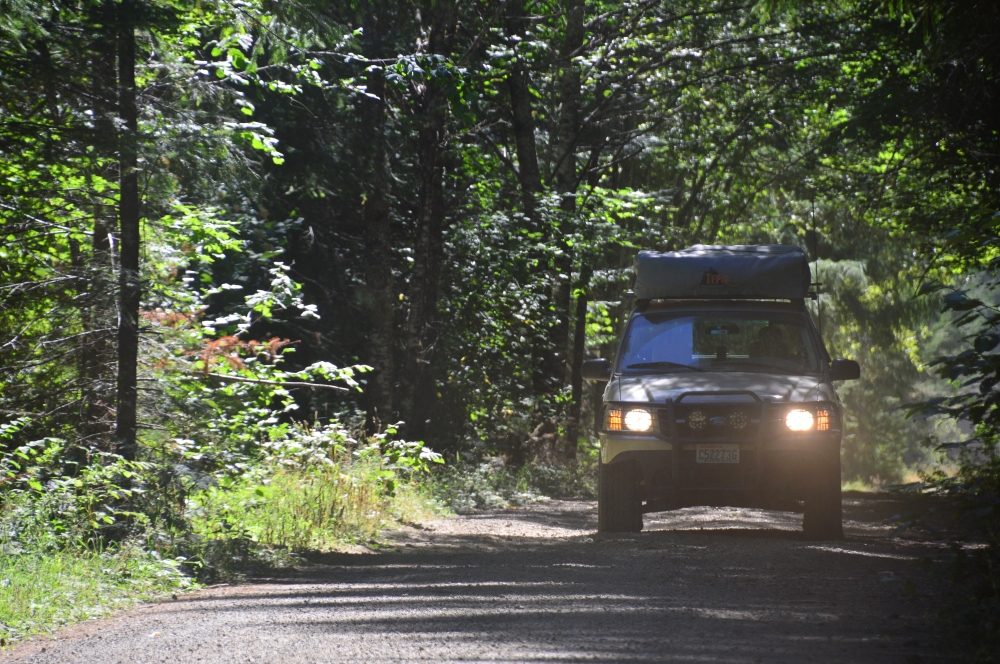
On WA BDR
Cons:
What’s breaking or not going well?
The plastic vapor barrier. (I think that’s what it is.) It’s peeling and there doesn’t appear to be much to do about it. The exterior of it is getting the usual dust from the trail as well and being beaten on by the brush hanging over many of the back roads of the USA. On the inside it’s being rubbed by the mattress getting all manner of things under it.
The base. As mentioned above, despite being durable, the aluminum base has a few dents in it, which haven’t had any adverse effects on our use of the tent but I am keeping an eye on it. The ladder is wearing it out in a few spots too. None of the other aluminum components are showing wear. Despite 2 adults sleeping in the tent and occasionally a dog.
The ladder is beating the heck out of everything it touches. Both the rubber cover and the aluminum base that is sits on. The ladder is wearing a hole through not only the plastic barrier but the paint and maybe given a few more years the base as well.
WATER. After moving to Roanoke, Virginia from Seattle, there has been lots of water intrusion. Since the cover has a few holes in it, the nightly thunderstorms have been battling me to keep the fabric wet. Yes, I know, I will replace the cover soon. Even with a new cover, the small rain fly that comes with the tent isn’t going to keep you perfectly dry in a heavy downpour. Tepui does offer better weather proofing, but of course this review is of the Kukenam as it is.
If you plan to camp in a prolonged manner though a few days of rain, plan for the mattress to get wet. Once you pack up the wet tent fabric, it’s all going to rub together and remain wet inside the rubber cover. When we camped out last summer the constant thunder storms were killing us. White mold or mildew started appearing on the fabric and blue looking mold is appearing in some spots as well too, which provided us with a smell too.
Weight. I have a vehicle specifically known for rolling over. I drive it with this in mind so it’s not a major concern for me. Still though, the Kukenam weighs about 130 pounds. Plus blankets. If you’re like me, that is not the only added weight. I built a custom bed rack that also changed the vehicles center of gravity. Just be aware that it may change the handling of your vehicle. Also, know your vehicles gross vehicle weight rating.
The only other major damage was upon arrival from the factory. There was a drill bit stuck in the hole for the window pole. I drilled a new one and moved on. This was the only factory defect to my knowledge. I didn’t really try to get in touch with Tepui about it. I had the tent already, I just wanted to use it.
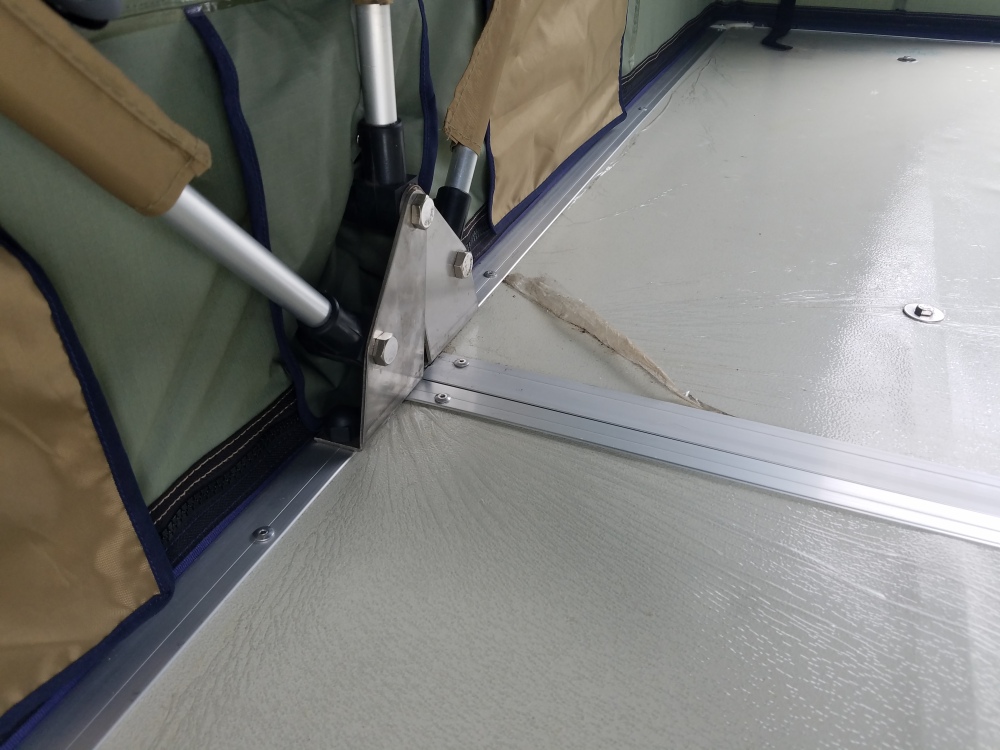
Interior vapor barrier peeling
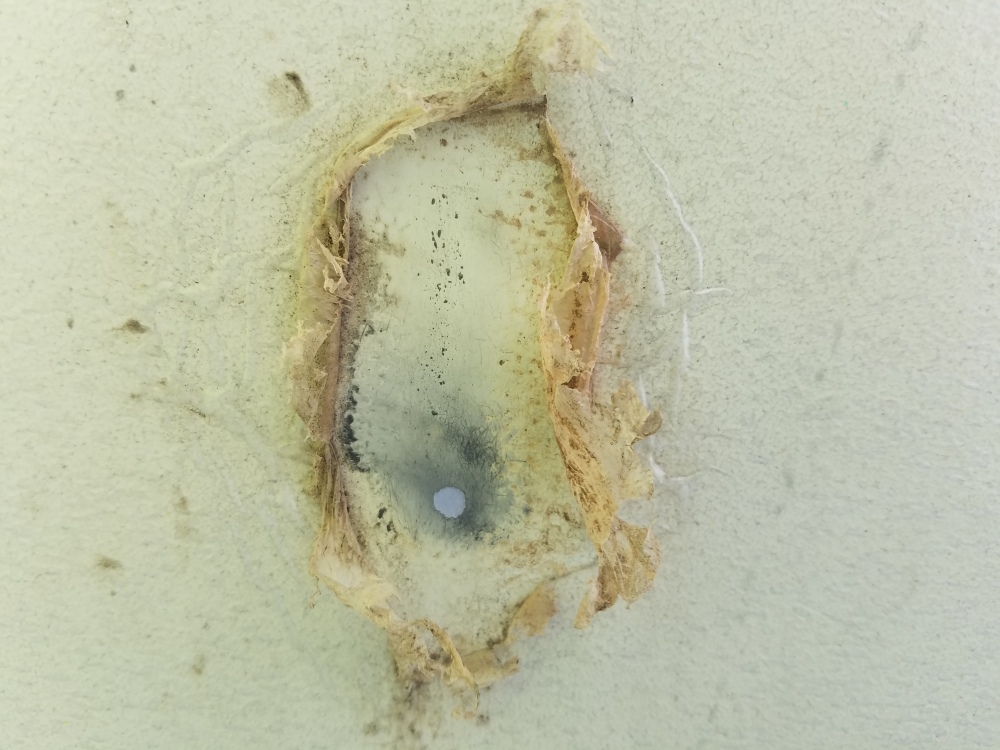
The ladder is rubbing here
All things considered?
If you are in the market, I would gladly recommend Tepui or really, most big brands.
I have been on a few trips with other types of tents and from what I have gathered, Tepui, Free Spirit Recreation, and Cascadia Vehicle Tents are all manufactured in the same facility or get the parts from a similar supplier. The owners of these tents have all been very satisfied with the product and customer service.
After living in this tent and the many trips, I really do like the size, price, and overall performance. The Kukenam is in the lower end of the price range and it holds its own as a great tent.
In the future, I will be looking for a hard-shell type tent and maybe something that has better drying and water proofing. For example, the James Baroud hard shell series with the closed self-contained ventilation, not only good for hot nights but for drying the tent while closed. The price is much higher than our current tent though.
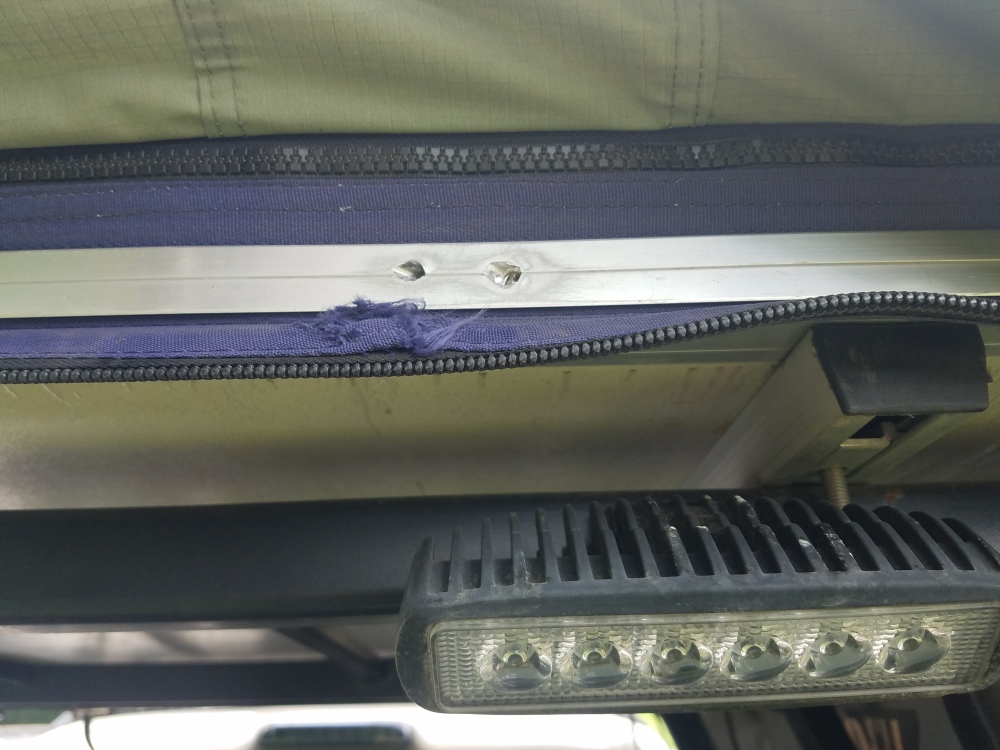
Where I drilled a new hole
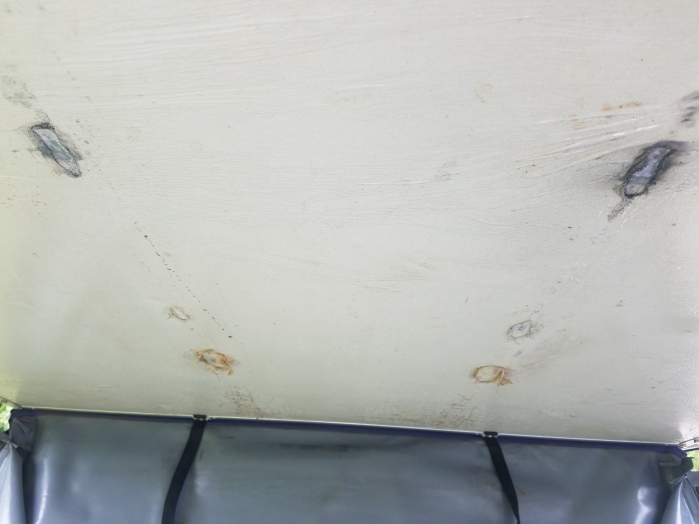
The ladder rests here when stored
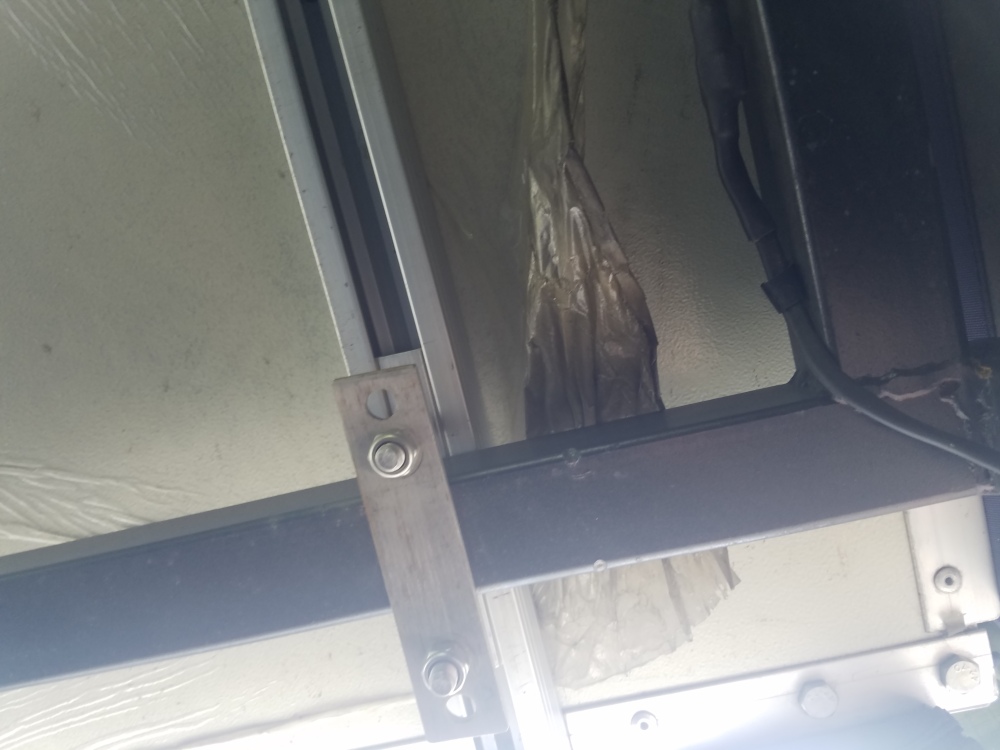
Exterior plastic peeling
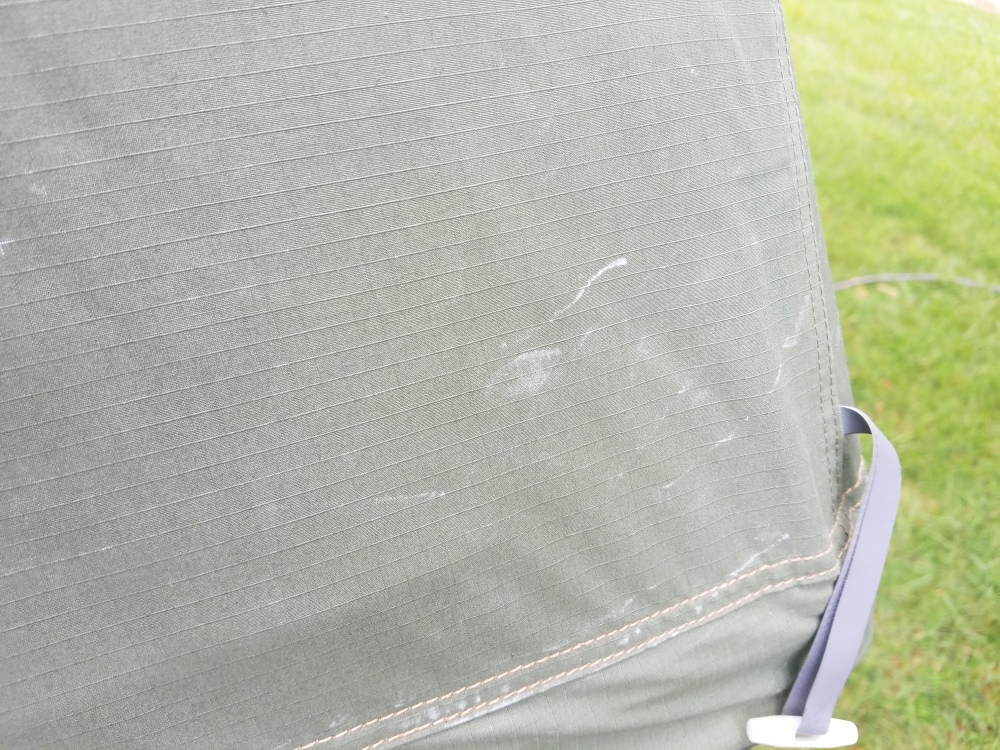
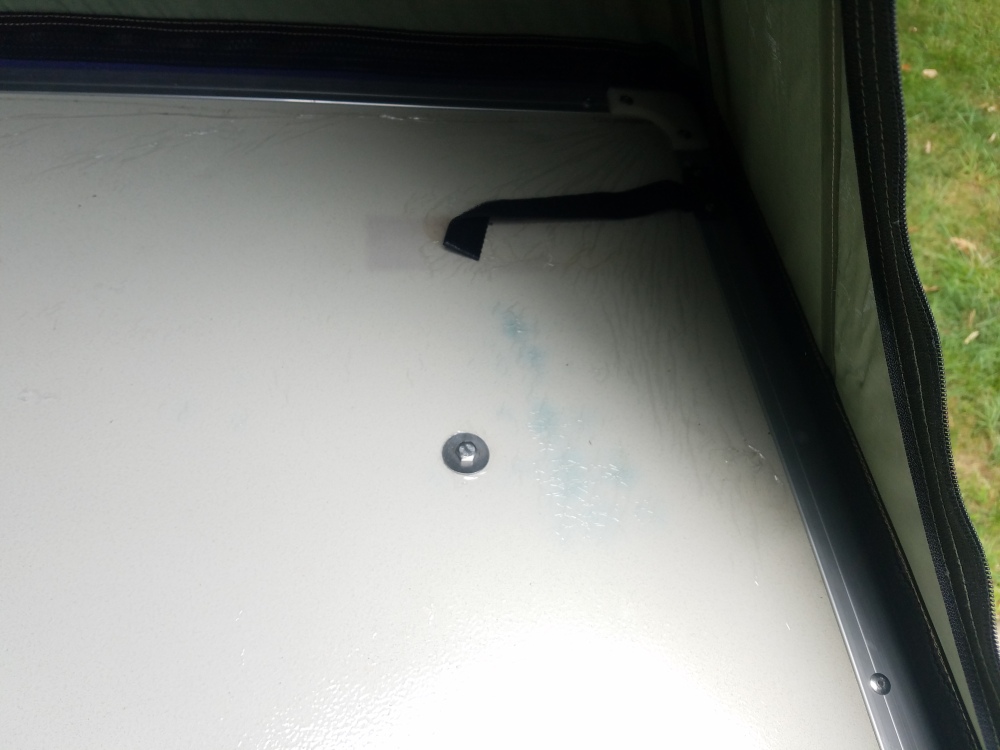
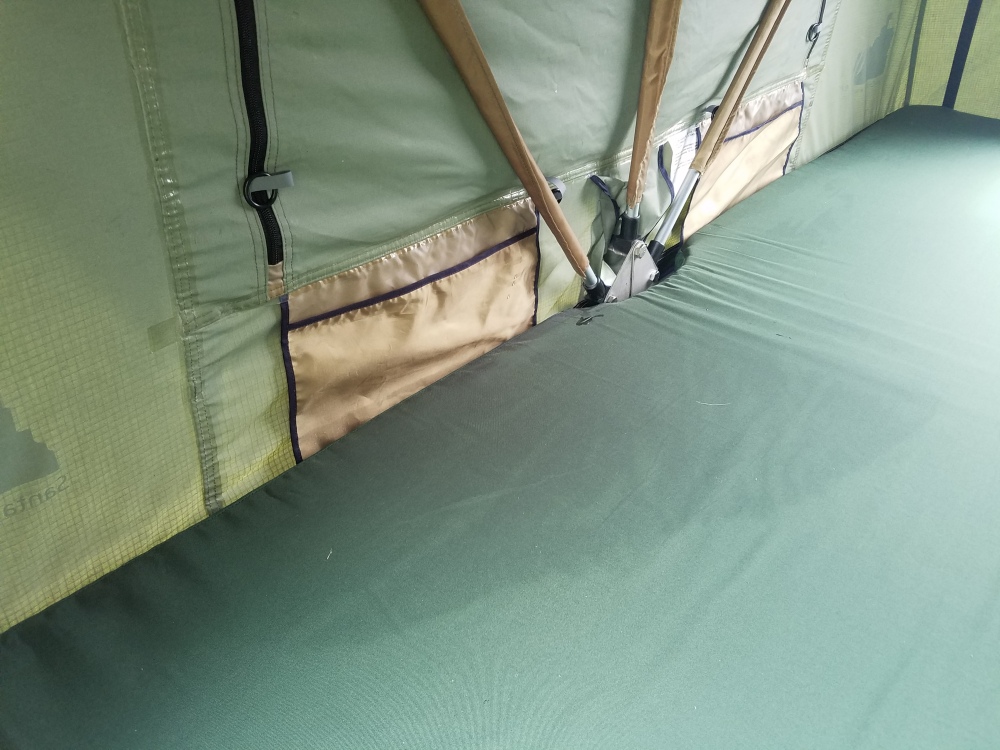
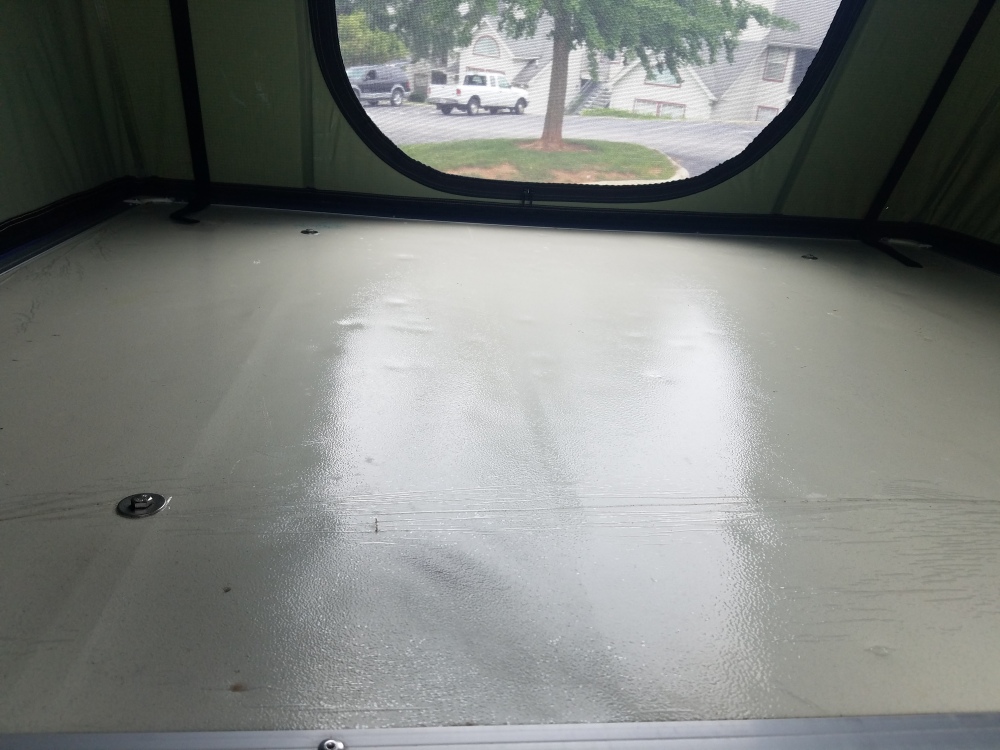
Comment below what tent you have or plan to have!
Have you had any issues with your tent?
For more reviews and trip reports. Adventure_Trac

Review: Tepui Kukenam Sky
Our current cooler Seems like forever ago when I bought this Tepui Kukenam Sky. So much has happened between now and then. Lots of camping trips and life events. Through all of it the tent was sadd…
 advntrtrac.home.blog
advntrtrac.home.blog

Our current cooler
Seems like forever ago when I bought this Tepui Kukenam Sky. So much has happened between now and then. Lots of camping trips and life events. Through all of it the tent was saddled up and ready to roll out at a moment’s notice, which is a nice feature of a tent that is mounted on the truck already. I can’t begin to count the amount of last minute trips I have done.
I bought the tent at Mule Expedition Outfitters in Issaquah, WA in July of 2017 (Shout out to Mule). Immediately we took it out. Not that we needed a new excuse to take a trip as we had already been going all over the Northwest and California before the tent anyway.
Here we are, 2,730 miles away from Mule and 745 days later after purchasing. This tent has been on the truck for about 65k miles, 16ish states, seen the Pacific and Atlantic, mountains and beaches.
Time has done a number on the tent. Before I start talking about what we’ve learned, and the damages, I want to point out that we have not been kind to the tent or taken steps to protect it, like taking it off the truck during winters.

I am not affiliated with any company mentioned or sponsored by them.
This article is my opinion. There is no sponsored 70k dollar Insta-landing here.
The tent is a 2017 Tepui Kukenam Sky. They have probably made changes in manufacturing since then, so I can’t speak for what they have learned through R&D. If you are planning on getting a tent, contact the manufacturer to see what they have done to prevent some of the cons I mention below.
Pros:
Space savings. It saved us lots of space inside of our small truck as well. Now the tent and other sleeping stuff can be out of the bed or cab and safely contained on top of the rack. If you have a small truck or Jeep, then you know storage is constantly a battle.
Safety and security. The Tepui definitely beats being on the ground in a thin plastic tent any day. Katrin loves that it’s up away from where bears and the bumps in the night could just walk through the walls. Also, when we hear something roaming around or the dogs start barking, we have a nice vantage point to see out like a tree stand. All of the windows open fully as well, if you really want to use it as a tree stand.
Beating the rain, snow, and mud. The times when we have camped in the rain, we never woke up in a puddle. Despite being a bit wet on the walls and edges of the mattress. When it comes to rain, we have had to put the tent away wet on multiple days back in August of 2018 when we were living full time in the truck. (A con mentioned below) The rain fly for this model is great for a night or two in the wet but eventually all of the fabric being stuffed inside the rubber cover gets everything wet, it’s not water tight. When it comes to snow and mud, you’ll be in the clear, since it requires no ground clearing to set up. Plus, you won’t be laying on top of the snow.
Durability. The materials have been mostly durable. Including the YKK zippers, mattress, fabrics, rain fly, and actual base of the tent, which has some small dents but remains solid. The ladder has also held up very well despite rain, mud, and a dog or two being carried up and down it. Once you see a roof top tent in person, you’ll notice that the fabrics and other materials used are not cut from the cheap stuff.
Great Support. If you don’t like the mattress, you can buy a plush one. Getting moist? They have a mat for that. Shoe bags to keep your dirt outside. Add on rooms/annex, a table for inside the tent, insulation, and replacement parts all on the website.
It’s clean. Less dirt and bugs get into the tent being up so high. The ladder itself helps knock off the crud from your hiking boots while you’re climbing up. If you get the shoe bags then you’re even better off. This is also great when we camped on the beach last year. We all know how sand gets into EVERYTHING.
Time. I have spent a great deal of time outside in lots of portable shelters and tents. I have even slept in nothing more than just a sleeping bag. The advertised time to set up on Tepui’s website is “just a few minutes” which is accurate to say. In my experience, set up time is invested in three steps. (1) Getting the truck/tent level (we like to use sticks, rocks, or preferably our GoTreads) (2) Getting the cover off/opening it, and (3) setting it up for use (making the bed and opening the windows).

On WA BDR
Cons:
What’s breaking or not going well?
The plastic vapor barrier. (I think that’s what it is.) It’s peeling and there doesn’t appear to be much to do about it. The exterior of it is getting the usual dust from the trail as well and being beaten on by the brush hanging over many of the back roads of the USA. On the inside it’s being rubbed by the mattress getting all manner of things under it.
The base. As mentioned above, despite being durable, the aluminum base has a few dents in it, which haven’t had any adverse effects on our use of the tent but I am keeping an eye on it. The ladder is wearing it out in a few spots too. None of the other aluminum components are showing wear. Despite 2 adults sleeping in the tent and occasionally a dog.
The ladder is beating the heck out of everything it touches. Both the rubber cover and the aluminum base that is sits on. The ladder is wearing a hole through not only the plastic barrier but the paint and maybe given a few more years the base as well.
WATER. After moving to Roanoke, Virginia from Seattle, there has been lots of water intrusion. Since the cover has a few holes in it, the nightly thunderstorms have been battling me to keep the fabric wet. Yes, I know, I will replace the cover soon. Even with a new cover, the small rain fly that comes with the tent isn’t going to keep you perfectly dry in a heavy downpour. Tepui does offer better weather proofing, but of course this review is of the Kukenam as it is.
If you plan to camp in a prolonged manner though a few days of rain, plan for the mattress to get wet. Once you pack up the wet tent fabric, it’s all going to rub together and remain wet inside the rubber cover. When we camped out last summer the constant thunder storms were killing us. White mold or mildew started appearing on the fabric and blue looking mold is appearing in some spots as well too, which provided us with a smell too.
Weight. I have a vehicle specifically known for rolling over. I drive it with this in mind so it’s not a major concern for me. Still though, the Kukenam weighs about 130 pounds. Plus blankets. If you’re like me, that is not the only added weight. I built a custom bed rack that also changed the vehicles center of gravity. Just be aware that it may change the handling of your vehicle. Also, know your vehicles gross vehicle weight rating.
The only other major damage was upon arrival from the factory. There was a drill bit stuck in the hole for the window pole. I drilled a new one and moved on. This was the only factory defect to my knowledge. I didn’t really try to get in touch with Tepui about it. I had the tent already, I just wanted to use it.

Interior vapor barrier peeling

The ladder is rubbing here
All things considered?
If you are in the market, I would gladly recommend Tepui or really, most big brands.
I have been on a few trips with other types of tents and from what I have gathered, Tepui, Free Spirit Recreation, and Cascadia Vehicle Tents are all manufactured in the same facility or get the parts from a similar supplier. The owners of these tents have all been very satisfied with the product and customer service.
After living in this tent and the many trips, I really do like the size, price, and overall performance. The Kukenam is in the lower end of the price range and it holds its own as a great tent.
In the future, I will be looking for a hard-shell type tent and maybe something that has better drying and water proofing. For example, the James Baroud hard shell series with the closed self-contained ventilation, not only good for hot nights but for drying the tent while closed. The price is much higher than our current tent though.

Where I drilled a new hole

The ladder rests here when stored

Exterior plastic peeling




Comment below what tent you have or plan to have!
Have you had any issues with your tent?
For more reviews and trip reports. Adventure_Trac
Last edited:




